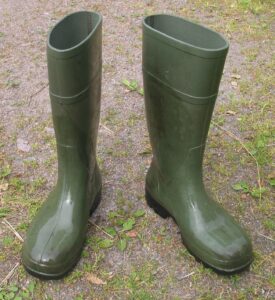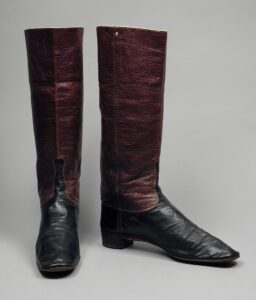Wellies (/ˈweliz/)

We’ve all used them at some time or other – the invaluable waterproof boot. But did you know where the common (British) English term comes from?
‘Wellies’ is a very common abbreviation for ‘Wellington boots’. If you visit England in the winter, especially if you get caught in the snow, you’ll soon hear people talking about their wellies. The name comes originally from the leather boots designed by Arthur Wellesley, 1st Duke of Wellington, around 1845,

which were then modified in the 1850s by an American called Hiram Hutchinson and made out of rubber. They were first manufactured in France, but have retained the name Wellington boots, or simply “wellies” in the UK ever since.
A wonderful associated expression in the UK is ‘give it some welly’, which means to apply more physical effort or force to something. If you want someone to drive faster, for example, you could suggest they ‘give it some welly’, or if you are having a hard time getting a nail into some wood, you may need to ‘give it more welly’.

Going back to the boots, in some parts of Brazil, the equally romantic name ‘seven league boots’ (botas de sete léguas) is sometimes used for this type of boot, coming from a national manufacturer of the same name; while in Portugal, they might also be called galochas, botas de água or even the original bota de Wellington.
Interestingly, the idea of ‘seven league boots’ comes from European folklore, and these magic boots would allow their user to take steps of seven leagues (around 34km), the distance an average person might apparently walk in an average day (Wikipedia). The word galochas, on the other hand, comes from the French word galoche and probably originally from Greek.
By comparison, botas de água is a rather disappointing term, although it is certainly more accurate!


